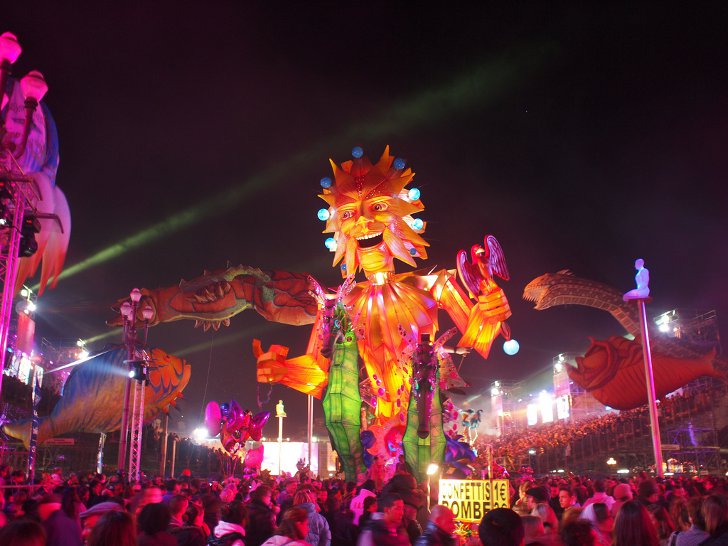Carnival is a Western Christian season occurring before Lent. A typical carnival celebration combines elements of a masquerade ball, a street party and a parade. The earliest mention of the Carnival of Nice dates back to 1294, when the Count of Provence Charles Anjou spent “the joyous days of Carnival” in Nice. Until the 18th century, the carnival season mainly featured masked balls supervised by the clergy.
Carnival celebrations were suspended following the French Revolution and revived after the fall of the First French Empire. The modern Nice Carnival was officially born in 1873, although the first parade featuring lavishly decorated carriages took place about four decades earlier.
The Carnival of Nice spans a two-week period in Feruary, culminating on Fat Tuesday (Mardi Gras), the last day before the beginning of Lent. Its program includes a series of spectacular parades that take place day and night, featuring over 1,000 musicians and dancers from around the world.
Daytime parades are known simply as Carnival Parades, while nighttime parades are called Carnival Parades of Lights. Each parade features 18 papier-mâché floats designed according to the theme of the Carnival as well as street theater, music and dance groups. Every edition of the Carnival has a new theme, but every theme is somehow related to the word King. Parades of Lights are similar to daytime Parades, but for nighttime events the floats are illuminated to create a special atmosphere.
Flower Parades, also known as Flower Battles, are one of the Carnival’s main highlights. One of their goals is to promote locally produced flowers. The first Flower Battle (Bataille de Fleurs) was held in 1876. Each Flower Parade features colorful floats ridden by costumed models who throw flowers to an enthusiastic crowd. These flowers typically include roses, carnations, daisies, mimosas, gerberas, and gladioli. Flower Battles occur on the Promenade des Anglais along the Mediterranean.
Alongside Carnival Parades and Flower Battles, the Carnival of Nice features a variety of events and attractions including sports competitions, numerous parties, and spectacular firework displays.

Photo by Kirsteen Dalziel




